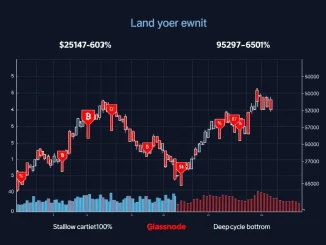
The world of decentralized finance (DeFi) is constantly evolving, and one key piece often discussed is the need for stable assets that aren’t tied to centralized entities. Enter the concept of a Bitcoin stablecoin. While Bitcoin itself is known for volatility, leveraging its robust network and store-of-value properties to back a stable asset is a fascinating idea. Elastos, a project focused on building decentralized infrastructure, is stepping into this space with a significant launch: Elastos BTCD.
What is Elastos BTCD?
Elastos has officially launched BTCD, an innovative stablecoin designed to maintain a stable value, pegged loosely to the US dollar. What makes BTCD stand out is its backing: it’s collateralized by Bitcoin (BTC). This isn’t just a simple 1:1 backing; BTCD requires users to overcollateralize their positions, initially set at a robust 160–200%. This overcollateralization is a common mechanism in decentralized stablecoins to absorb potential price volatility of the underlying asset (in this case, BTC) and help maintain the stablecoin’s peg.
BTCD is being introduced through Elastos’s Bitcoin DeFi protocol, known as BeL2. BeL2 aims to bring more decentralized financial applications and capabilities directly onto or closely integrated with the Bitcoin network, unlocking new potential for the world’s largest cryptocurrency.
Why a Bitcoin Stablecoin?
For years, stablecoins have primarily existed on networks like Ethereum, often backed by fiat currency reserves or other crypto assets. However, there’s a growing demand to utilize Bitcoin’s immense market cap and security within DeFi. A Bitcoin stablecoin like BTCD offers the potential to:
- Provide stability for Bitcoin holders without needing to sell their BTC.
- Enable participation in DeFi protocols using a BTC-backed asset.
- Leverage Bitcoin’s censorship resistance and decentralized nature.
By building this through their BeL2 protocol, Elastos is directly addressing the challenge of integrating Bitcoin more deeply into the DeFi landscape.
How Does the BTCD Stablecoin Work?
The fundamental mechanism behind the BTCD stablecoin relies on its BTC backing and the specified overcollateralization ratio (160-200%). Users would likely lock up a certain amount of BTC within the BeL2 protocol to mint a smaller value of BTCD. If the value of the locked BTC drops significantly, approaching the collateralization threshold, mechanisms (like liquidation) are typically triggered to protect the stablecoin’s peg.
The system is also designed to use on-chain arbitrage. This means that if the price of BTCD deviates from its intended peg (e.g., slightly below or above $1), market participants can profit by buying or selling BTCD, which helps push its price back towards the target. This automated, decentralized arbitrage is key to maintaining stability.
Elastos has described the system as mimicking a ‘digital Bretton Woods’ system. The original Bretton Woods system fixed exchange rates to the US dollar, which was in turn convertible to gold. In this digital analogy, Bitcoin acts somewhat like the ‘gold’ reserve, providing the underlying value and security, while BTCD acts as the ‘dollar,’ providing a stable unit of account within the crypto ecosystem, facilitated by the rules of the BeL2 protocol.
Elastos Stablecoin and the Future of Bitcoin DeFi
The introduction of this new Elastos stablecoin, BTCD, marks a significant step for the project and the broader vision of Bitcoin DeFi. While Bitcoin’s scripting capabilities are limited compared to smart contract platforms, projects like Elastos are finding innovative ways to build functionality around it. BeL2 appears to be a key part of Elastos’s strategy to create a more interconnected web3 environment where Bitcoin plays a central role beyond just being a store of value.
The success of BTCD will likely depend on adoption, the effectiveness of its stability mechanisms under various market conditions, and the growth of the BeL2 ecosystem. If successful, it could pave the way for more complex DeFi applications utilizing Bitcoin’s security and liquidity.
In Summary
Elastos’s launch of BTCD is an exciting development for anyone interested in stablecoins and the expansion of DeFi onto the Bitcoin layer. By creating an overcollateralized, BTC-backed stablecoin via their BeL2 protocol, Elastos is offering a novel way to bring stability and new financial use cases to the Bitcoin ecosystem. This move highlights the ongoing innovation in the space, pushing the boundaries of what’s possible with decentralized assets.



